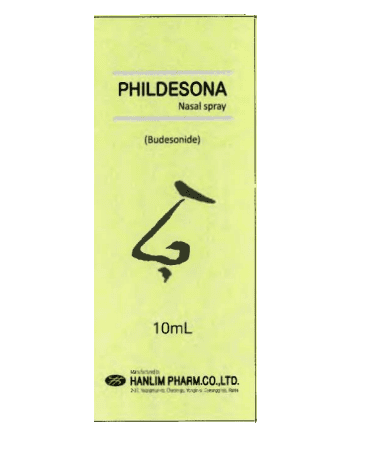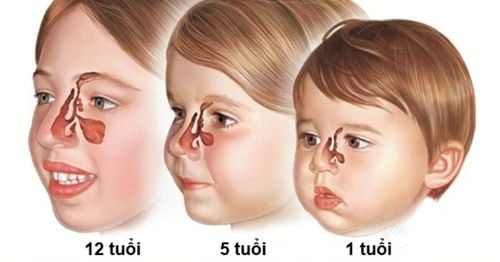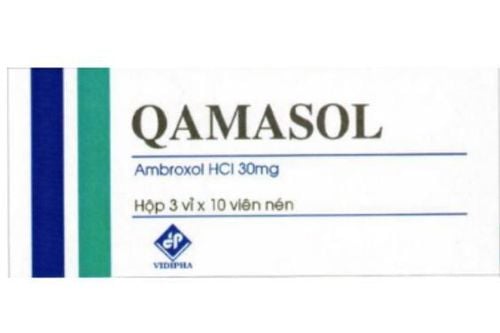This is an automatically translated article.
The article was consulted with Specialist Doctor II Nguyen Van Thai - Ear, Nose Throat Doctor - Department of Medical Examination & Internal Medicine - Vinmec Danang International General Hospital.Acute sinusitis is a condition in which the sinus openings are blocked leading to reduced circulation at the site, symptoms occur for about 4 weeks. Although not as long-lasting as a chronic disease, if not treated promptly, acute sinusitis will lead to a number of dangerous complications.
1. What is acute sinusitis?
The sinuses are defined as the bony cavities in the face and head, covered with a mucosa that is continuous with the nasal mucosa, and have openings with the nasal cavity called the sinus openings. The mucosal layer is responsible for protecting the sinuses from pathogens from the outside, warming and humidifying the inhaled air. The sinus system in the head and face has the effect of lightening the head as well as creating a unique voice for each individual due to the different sinus volumes and structures in each person.For adults, there are 5 pairs of sinuses divided into 2 groups: anterior and posterior sinuses. In a normal state, the sinus openings are very open to circulate secretions from the sinuses as well as air. When the patient falls into acute sinusitis, the mucosa on the surface of the sinuses becomes inflamed, edematous, blocking the sinus opening, air and secretions cannot circulate, so acute sinusitis occurs. .
If the virus is the causative agent, after a short time, the sinusitis as above will automatically go away and the sinuses will return to the original state of ventilation. However, if the blockage of the sinus openings continues, the lining of the sinuses will secrete more and more fluid, causing the fluid to stagnate a lot, sometimes with pus, causing acute sinusitis. or acute purulent sinusitis. At this time, because there is a lot of stagnant fluid, it will put great pressure on the bones of the head and face, causing pain, also known as sinusitis, headache.
This sinusitis lasts for a period of 4 weeks, so it is called acute sinusitis, and if it lasts more than 8 weeks, it turns to chronic sinusitis.
The cause of acute sinusitis may be due to a polluted environment, people are exposed to dust, chemicals every day, making the disease tend to increase. The more common causes of acute sinusitis are viral, bacterial, parasitic infections..., manifesting in inflammation in some parts of the body related to rhinitis, pharyngitis, tonsillitis, and inflammation of the tonsils. infection of teeth and gums... Some cases of acute sinusitis are caused by allergies to agents from the external environment such as pollen, dog and cat hair, microorganisms ... called allergic sinusitis.
Some risk factors increase the likelihood of acute sinusitis:
● Summer fever due to allergies to environmental agents such as pollen.
● There are anatomical abnormalities such as deviated nasal septum, excess flesh, tumor inside the nose.
● People with cystic fibrosis, immune disorders, typically HIV infection.
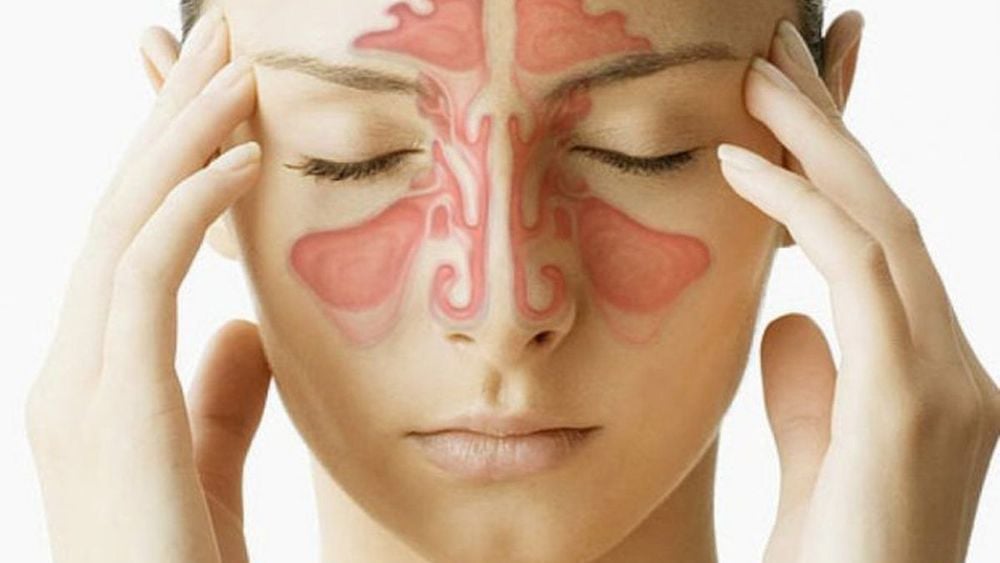
2. Symptoms of acute sinusitis
Acute sinusitis is characterized by symptoms appearing for about 10-14 days, during which time the symptoms do not improve but may be severe from the beginning. Some common clinical symptoms of acute sinusitis are: Facial pain, intermittent pain, severe pain in the morning, the pain location may be the cheek for maxillary sinusitis, the area between the eyebrows for for frontal sinusitis, between the eyes for anterior ethmoid sinusitis, pain inside the head and pain in the back of the neck for sphenoid sinusitis. Patients with pain will have a feeling of heaviness in the cheeks on both sides of the forehead as well as the temples, sometimes spreading to the top of the head and pain in the molars. This is one of the typical symptoms of acute sinusitis. A runny, thick, mucousy, yellow or green, sometimes foul-smelling, runny nose that runs through the nostrils or the back of the throat is called postnasal drip. Runny nose often flows on both sides of the nose Runny, stuffy nose makes it difficult to breathe, stuffy nose is worse when lying down and increases at night, can lead to decreased sense of smell. Some other symptoms include tinnitus, ear pain, headache, cough, fatigue, fever, nausea...3. Is acute sinusitis dangerous?
If acute sinusitis is not treated in time, it will leave a number of dangerous complications such as chronic sinusitis, rhinitis, chronic pharyngitis, respiratory tract infection, acute otitis media, nephritis, arthritis. .. It is impossible not to mention a very dangerous complication of acute sinusitis that is blindness. Acute sinusitis can lead to orbital inflammation, eyelid abscess, optic neuritis, inflammation of the lacrimal sac, followed by sudden loss of vision and blindness. In children, acute sinusitis can be a complication of external ethmoid sinusitis, which manifests as a pocket of pus forming in the inner corner of the child's orbit. Or it is also possible that acute sinusitis will cause bone marrow inflammation of the maxillary bone, causing swelling of the cheeks, under the eyes of the child. And the most dangerous acute sinusitis complication is that it can also lead to death.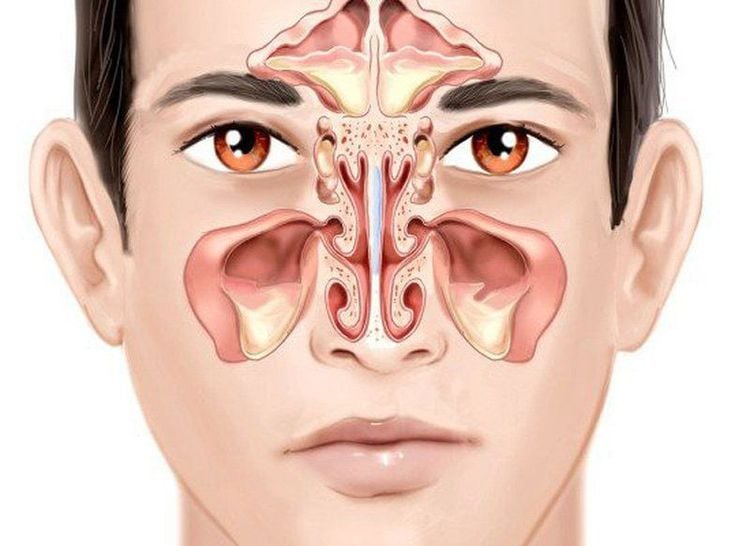
4. Cure acute sinusitis
Acute sinusitis caused by a virus will go away on its own after a short period of time without the need for treatment, while for other acute sinusitis, the main treatment is to relieve the symptoms it causes. In addition, the following methods can be applied to treat acute sinusitis:● Use dilute saline to clean the nose
● Use nasal decongestants to spray every day, possibly corticosteroids.
Pain relievers such as Aspirin, Acetaminophen, Ibuprofen...
● Antibiotics if sinusitis is too severe.
● Apply immunotherapy if it is allergic rhinitis, this method means allergy vaccination to help the body's ability to react to foreign allergens, preventing allergic symptoms of body.
To prevent acute sinusitis as well as purulent sinusitis, the patient needs to have a healthy lifestyle, clean the body and the living environment regularly to prevent the disease. At the same time, when there are any abnormal signs, you should not be subjective but need to consult a specialist for timely treatment, to avoid unwanted complications.
Vinmec International General Hospital examines and treats common ear, nose and throat diseases, head and neck tumors, congenital malformations of the ear, nose and throat area with the most optimal internal and surgical methods for patients, both children and adults. As one of the leading prestigious hospitals in the country, trusted by a large number of patients for medical examination and treatment. Not only the physical system, modern equipment: 6 ultrasound rooms, 4 DR X-ray rooms (1 full-axis machine, 1 light machine, 1 general machine and 1 mammography machine) , 2 DR portable X-ray machines, 2 multi-row CT scanner rooms (1 128 rows and 1 16 arrays), 2 Magnetic resonance imaging rooms (1 3 Tesla and 1 1.5 Tesla), 1 room for 2 levels of interventional angiography and 1 room to measure bone mineral density.... Vinmec is also the place to gather a team of experienced doctors and nurses who will greatly assist in diagnosis and detection. early signs of abnormality in the patient's body. In particular, with the space designed according to 5-star hotel standards, Vinmec ensures to bring the patient the most comfort, friendliness and peace of mind.
BSCK II Nguyen Van Thai was formerly a Doctor of Otolaryngology and Head and Neck Surgery at the Department of Otolaryngology - Hue Central Hospital with more than 17 years of treatment experience, especially in the field of Head and Neck Surgery. Currently, he is an Otolaryngologist at the Inter-Specialist Clinic of the Department of Medical Examination and Internal Medicine, Vinmec Da Nang International General Hospital.
Please dial HOTLINE for more information or register for an appointment HERE. Download MyVinmec app to make appointments faster and to manage your bookings easily.







